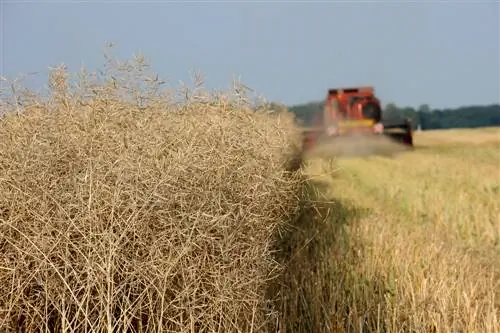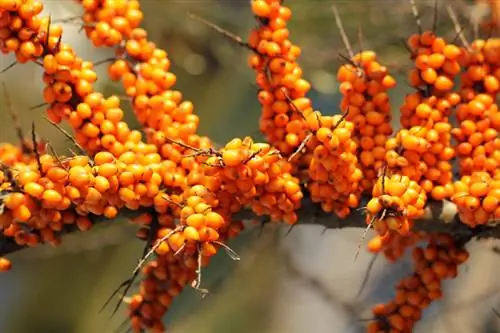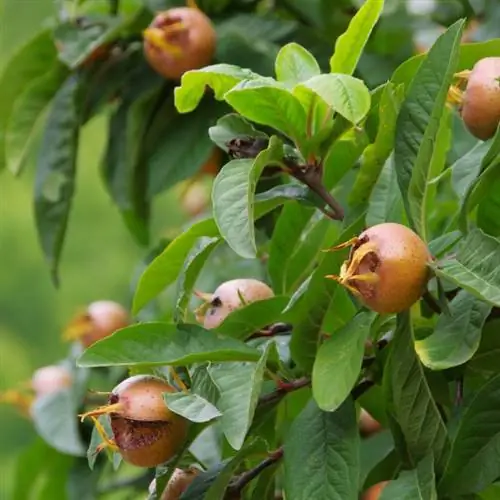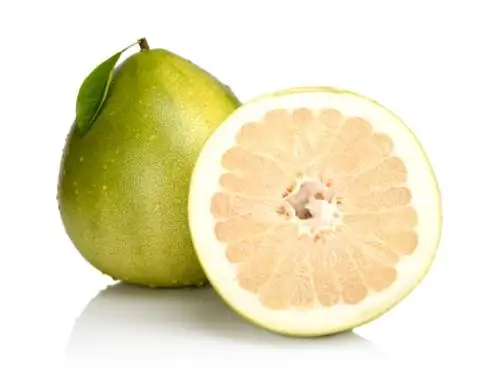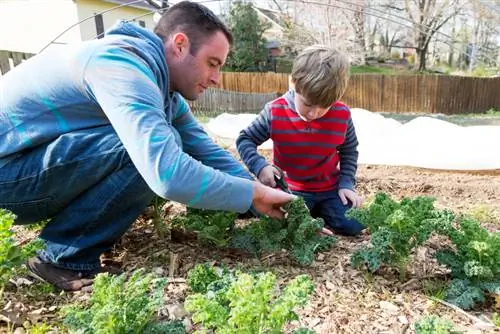- Author admin [email protected].
- Public 2023-12-16 16:46.
- Last modified 2025-01-23 11:21.
What would a summer be without the golden yellow rapeseed fields? Even after flowering, the bright color of the productive crop remains with us. Then, for example, it comes in the form of rapeseed oil in margarine on bread or in the pan, provides us with he althy fatty acids or sweetens breakfast as creamy honey. However, until you can enjoy the yield from the small seeds, a lot of effort is required during harvesting. Determining the right time for this is not that easy.
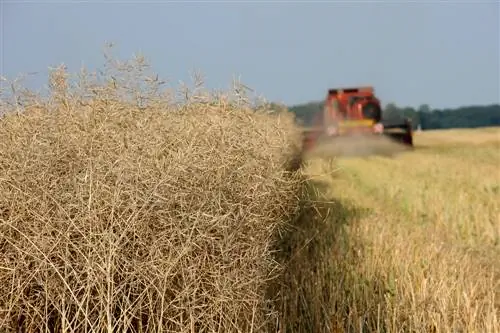
When is rapeseed harvested?
The rapeseed harvest begins in July, when the pods are brown, the seeds are black, and the moisture content is below 11%. The exact timing depends on weather conditions, rapeseed variety and regional differences. Experience and good instinct are crucial for a successful harvest.
When is the time for the rapeseed harvest?
In July, dark pods formed from the yellow sea of flowers, which can now be harvested and further processed. Since the rapeseed harvest is highly dependent on weather conditions, the appropriate time varies from place to place and from year to year. On top of that, the rapeseed variety is also crucial.
Requirements for harvesting
- brown pods
- black seeds
- Humidity below 11%
Experience and a good instinct are required
Naturally, not all rapeseed plants mature at the same rate. With this plant in particular, the flowering period lasts a full four weeks. The main shoots form first, later the side shoots. Accordingly, these are not yet fully developed in July, but the main shoots are ready for harvest. The influence of wind and sun is also crucial for the ripening process of the rapeseed flower, so that the shoots at the top turn brown more quickly. Therefore, farmers always focus on the upper pods.
Disadvantages of even green pods
- less oil content
- rubbery grains stick together the engine of the combine harvester
- the rapeseed is still too wet
- general harvest loss due to unusable grains
Setting priorities
Hasty action and early harvest can mean major losses for rapeseed production. A successful return requires a certain level of experience. But even the trained farmer is not always completely sure and plays with luck a little. Weather forecasts are a helpful means of orientation. Furthermore, it makes the workload easier if the rapeseed is brought in before the wheat. In turn, this can have a negative impact on the crop yield. In this case, it is entirely up to the farmer whether he chooses more practical working conditions or the highest possible profit.

